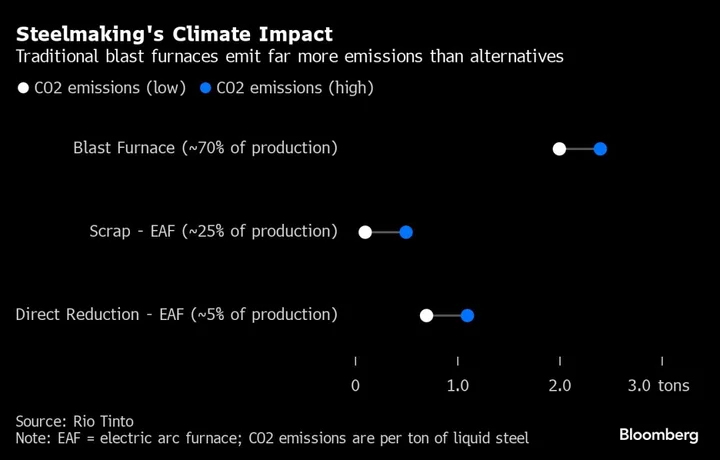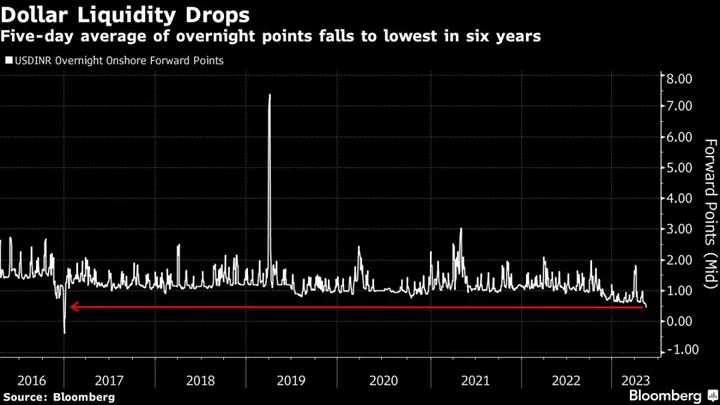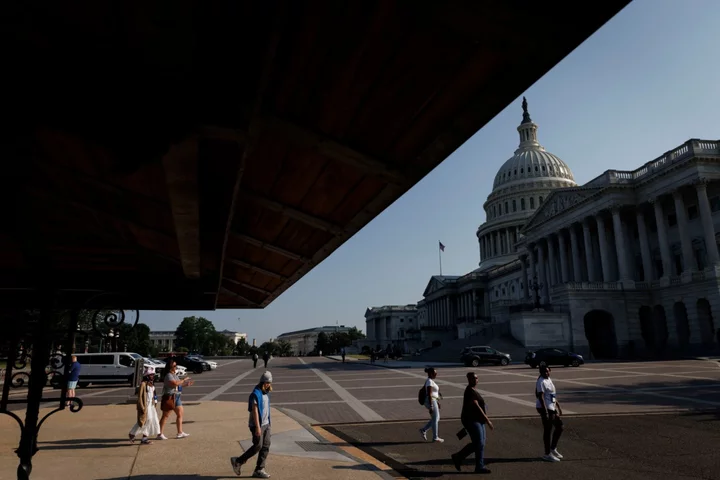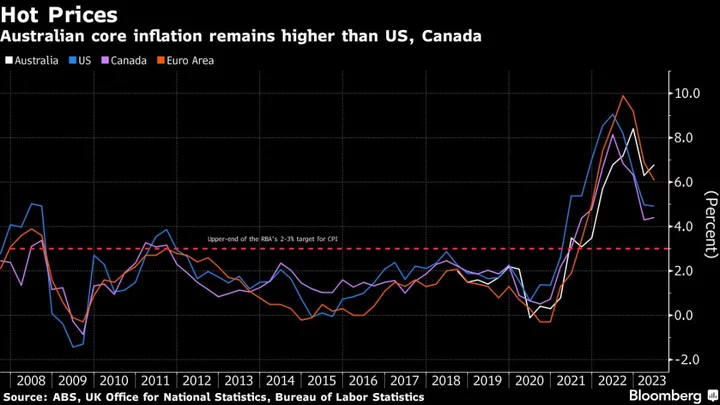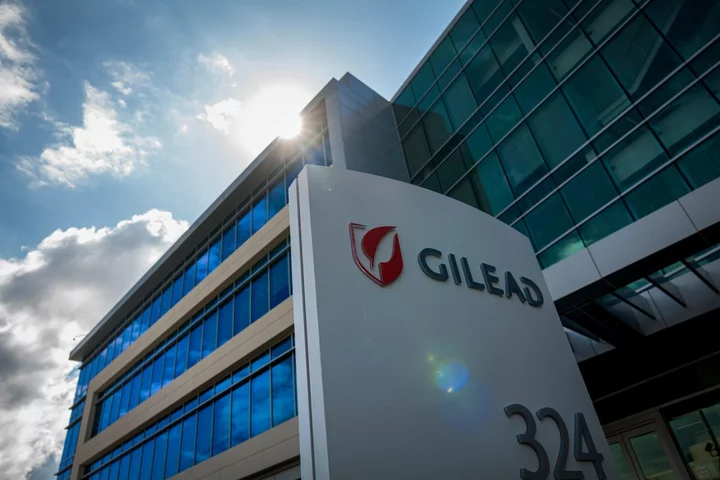Vast heaps of crushed brown rock hem the Indian Ocean at Western Australia’s Parker Point port — each a stockpile of 200,000 tons of iron ore, ready to be poured into a procession of bulk carriers bound for Asia’s steel mills.
Rio Tinto Group, the world’s largest iron ore producer, shipped its first cargo of the steelmaking ingredient from this spot in 1966, at the dawn of a boom that minted billionaires and lifted the Australian economy, generating A$1.3 trillion ($820 billion) in earnings in the past two decades alone. Last year, iron ore shipments accounted for about 5% of the country’s gross domestic product.
But now China is cooling, while steel producers are under pressure to clean up a sector that accounts for at least 7% of global greenhouse gas emissions, a change that will require new methods and higher-quality raw materials. Much of the dry, dusty Pilbara region’s gargantuan resource base may no longer make the grade.
Rio, BHP Group Ltd. and Fortescue Metals Group Ltd. produce almost two-thirds of the world’s seaborne iron ore from Western Australia, and margins remain enviable. For the first time in a generation, though, the specter of disruption looms over mining’s most reliable profit generator.
“Australia’s ore industry is now at the start of a long-term structural decline,” said Tom Price, a London-based analyst at Liberum Capital Ltd. “It’s a fundamental shift that will resonate across the Australian economy.”
The first, and most urgent, question is China, which accounts for about 85% of Australia’s export earnings from iron ore.
Demand for steel in the second-biggest economy has plateaued and production is on track to peak before the end of the decade, dented by a years-long crisis in China’s property sector, which has typically consumed more than a third of the country’s steel output. While there’s some growth in smaller segments like manufacturing of electric cars and air conditioners, the economy is no longer building at breakneck speed, meaning the nation’s iron ore imports are forecast to decline. Impact is inevitable, even if other emerging nations make up for some of China’s lost appetite.
Still, the more intractable long-term challenge for the Pilbara’s giants may well be a green one.
At least 70% of steel is produced today using a process that’s been deployed in much the same way since the 14th century: metallurgical coal is heated to create coke, which is then used in a blast furnace to melt iron ore at temperatures of more than 1800C.
It’s an energy-intensive activity and one that produces about two tons of carbon dioxide for each ton of liquid steel, according to Rio.
Global demand for steel is still rising, and will climb by as much as a quarter through 2050, as India and developing economies across Asia industrialize — but investor, consumer and climate pressure on one of the dirtiest corners of industry is growing. Governments are acting too, with policies like the European Union’s carbon border adjustment mechanism, that penalizes carbon-heavy imports.
Read more: What It Would Take to Make Steelmaking Greener: QuickTake
The trouble for big diggers is that there are few attractive alternatives. Existing lower-emissions options include the use of electric arc furnaces — a method that doesn’t require coal and uses recycled steel scrap in place of iron ore. A shaft furnace route, deployed in about 5% of steel production, needs high grade pellets with low levels of impurities.
Among the most favored prospective solutions is to combine a renewables-powered electric furnace with direct reduced iron, a material produced by deploying natural gas to remove oxygen from premium ores. Eventually replacing the gas with green hydrogen — created using solar or wind energy — could dramatically cut steel emissions.
But Australia’s typical iron ore has a grade of between 56% and 62%, making it largely unsuitable for DRI production — or only with additional processing that could add as much as 25% to costs, according to Wood Mackenzie Ltd.
“The premium for higher grade material is going to increase significantly,” said David Cataford, chief executive officer of Champion Iron Ltd., a competitor to Australian producers which supplies higher-grade iron ore from Canada. “If you’re producing lower grade, we do feel it’s going to be more complicated in the medium-term.”
The biggest miners say they already produce the better stuff. Vale SA, which ships higher-quality raw material from Brazil and expects to command a green premium in future, is among those eager to forecast a world that favors richer ores. But higher-grade production — with an iron content of 66% or more — currently makes up only about 3% of global supply, so the race is on to crank up output from projects like the expansive (and expensive) Simandou development in Guinea, in which Rio is an investor.
“There’s an obvious shortage if demand ramps up during the course of decarbonization,” said Liu Yinghao, technical director at the low carbon metallurgy innovation center of China Baowu Steel Group Corp., one of the world’s top steelmakers.
The shortfall in higher grade iron ore could be as much as 200 million tons a year by 2050, Wood Mackenzie estimated in a report this month — a volume roughly equivalent to about a fifth of China’s current annual imports.
To plug the gap and hold on to their position in the market, Australia’s iron ore producers are experimenting with everything from microbes to straw, in a series of trials aimed at making their materials suitable for greener steelmaking. BHP is studying use of carbon capture technology at conventional steel mills and has a pilot with Hatch Ltd. to build an electric smelting furnace — a method that adds an additional process step and holds potential to utilize lower-grade raw material.
“If we can crack the code on the Pilbara ores, that is potentially a game changer,” Tania Archibald, chief executive for Australian steel products at BlueScope Steel Ltd. — among 40 entities collaborating with Rio — told an investor day last month.
Billionaire Andrew Forrest’s Fortescue, meanwhile, has begun production of small volumes of high-quality magnetite ore at its Iron Bridge project in the Pilbara, and has tested a coal-free electrolysis method to convert ore to green iron.
Forrest sees potential to go further than that intermediate step, and to use Australia’s advantages in renewable energy for a low-carbon revival of a domestic steelmaking sector that saw output peak a quarter of a century ago.
“Australia has got everything going for it to make its own steel,” Forrest said earlier this month in Perth, citing the country’s solar and wind resources, and potential to produce green hydrogen. “The policies right now channel against doing that — and encourage offshore production.”
Steelmakers are positioning for that shift, including South Korean giant Posco, which aims to develop new industrial facilities in Port Hedland, the Pilbara’s export hub.
Few changes come fast in mining. Australia’s iron ore incumbents say they have sufficient time to make the technology breakthroughs or strategy shifts they need to continue to prosper.
“The transition away from coal-based steel making is a reality, but it will take some time and there remain significant uncertainties,” said Simon Farry, Rio’s head of steel decarbonization.
After all, traditional blast furnaces in Asia are relatively new — on average about 12 years old in China, compared to more than 40 years across the mostly wealthy nations in the Organisation for Economic Co-operation and Development — and will operate for decades more, according to BHP’s Chief Economist Huw McKay. “The age of capital stocks is a critical factor in assessing the energy transition,” he told Bloomberg Television in an Oct. 24 interview. India will likely to prioritize the need for affordable steel from existing processes, he said.
But several markets are already adapting quickly, including Japan, South Korea, and — to a more limited extent — China, as Vale said in a written response to questions. Iron ore’s No. 2 supplier is adding output tailored to direct reduction in Brazil, and developing hubs in locations including Saudi Arabia, the United Arab Emirates and Oman to produce materials from as soon as 2027 for future green steelmaking.
Australia’s mining industry has been caught out before by the pace of change. Back in the early 2000s, it struggled to keep up with China’s accelerating iron ore consumption. Now, the risk is repeating the error at the other end of the economic and green cycle.
“The world is going to decarbonize,” Vale said. “If we don’t act quickly, we could miss this opportunity.”
--With assistance from Yee Xing Ng "Liz", Jacob Lorinc, Mariana Durao, Thomas Biesheuvel and James McIntyre.

